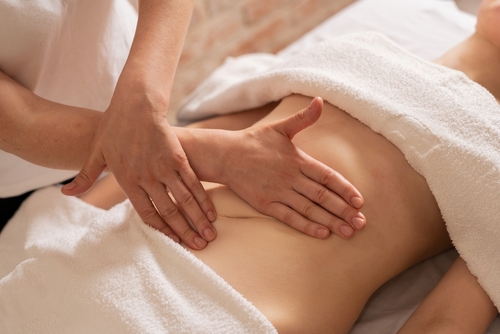
Massage for Lymphatic Drainage and Detoxification
September 30, 2023
All About Cupping Therapy in Massage
November 29, 2023What to Expect During a Swedish Massage Session?
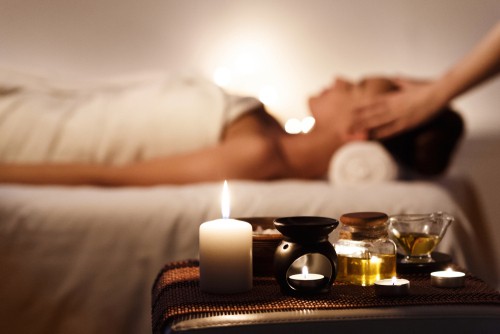
What to Expect During a Swedish Massage Session
What to Expect During a Swedish Massage Session? In today’s fast-paced world, the quest for relaxation and rejuvenation has become more critical than ever.
Among the myriad options available, Swedish massage stands as a beacon of tranquility, offering a pathway to serenity and relief from the stresses of daily life.
This article serves as your guide, unveiling the layers of what you can anticipate during a Swedish massage session.
Swedish massage has soared in popularity, earning its reputation as a go-to stress relief and relaxation therapy.
Its gentle yet effective techniques have made it a favorite among those seeking solace from the chaos of modern existence.
Let’s embark on this journey into Swedish massage to discover what awaits you! Read on!
The Basics of Swedish Massage
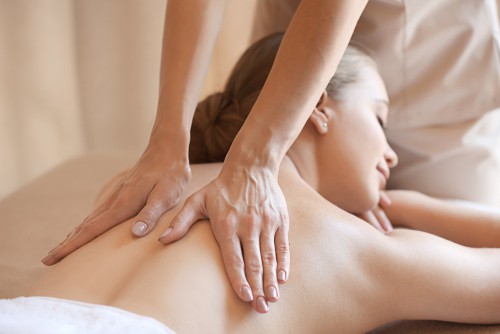
Swedish massage traces its origins to the 19th century when it was developed by a Swedish physiologist named Per Henrik Ling.
His techniques were designed to promote relaxation, improve blood circulation, and alleviate muscular tension.
Today, Swedish massage is practiced worldwide, cherished for its holistic approach to well-being.
The Core Principles
At the heart of Swedish massage lie five core principles:
1. Effleurage
Effleurage consists of long, gliding strokes that traverse the body’s contours. This technique serves as a soothing prelude to the deeper massage strokes that follow.
2. Petrissage
Petrissage involves kneading and squeezing the muscles gently but firmly. This action aids in the release of tension, increases flexibility, and enhances blood flow.
3. Friction
Friction entails deep, circular movements that target specific muscle knots and areas of tension. It’s particularly effective at breaking down adhesions in the muscles.
4. Tapotement
Tapotement is a rhythmic tapping or percussive motion applied to the body. This technique invigorates muscles and stimulates circulation.
5. Passive Joint Movement
Passive joint movement involves gently manipulating the joints to enhance flexibility and mobility. It’s especially beneficial for those with joint stiffness.
The Therapeutic Benefits
Each of these techniques serves a therapeutic purpose. Effleurage relaxes the body and prepares it for deeper work.
Petrissage and friction release muscle tension and knots. Tapotement invigorates the body, while passive joint movement enhances mobility and flexibility.
Preparing for Your Massage
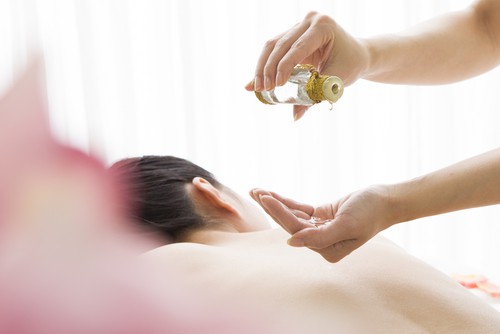
Pre-Appointment Preparations
Before your Swedish massage session, it’s essential to make a few preparations:
Hydration and Light Snacking
Staying hydrated is crucial. A glass of water before your massage session can help flush toxins from your body. Additionally, consider a light snack to maintain your energy levels.
Showering and Cleanliness
Your massage therapist appreciates good personal hygiene and can enhance your overall experience. A quick shower before your appointment ensures freshness.
Communication with the Therapist
Take a moment to communicate with your therapist. Share any specific concerns, areas of discomfort, or preferences you may have. Open dialogue ensures a tailored experience.
Choosing Massage Oil or Lotion
Selection of Massage Oils or Lotions
The choice of massage oil or lotion is a personal one. Many establishments offer a variety of options, each with its unique qualities. It’s a sensory journey, and the scent and texture can enhance your experience.
The Role of Aromatherapy
Aromatherapy, the use of essential oils to promote well-being, often complements Swedish massage. These scents can enhance relaxation and create a soothing ambiance.
Addressing Allergies or Sensitivities
If you have allergies or sensitivities to certain scents or oils, inform your therapist beforehand. They can accommodate your needs to ensure a comfortable experience.
The Massage Session
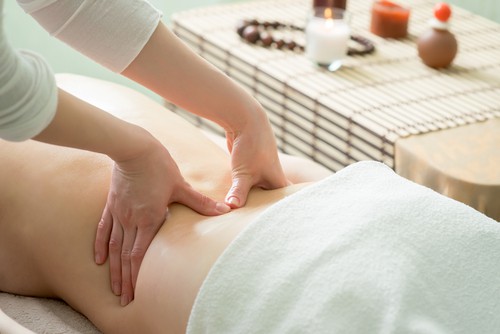
Step-by-Step Breakdown
A typical Swedish massage session unfolds in a structured manner to maximize its benefits:
1. Effleurage to Warm Up
The therapist begins with effleurage, using long, sweeping strokes to warm up your muscles and calm your nervous system. This stage sets the tone for relaxation.
2. Transition to Deeper Techniques
As your body relaxes, the therapist transitions to deeper techniques like petrissage and friction. These motions target specific muscle groups and tension points.
3. Application of Tapotement
Tapotement, or rhythmic tapping, is introduced to invigorate your muscles and promote circulation. The therapist’s skilled hands create a symphony of sensations.
4. Gentle Stretching and Joint Movement
Passive joint movement and gentle stretching may be incorporated to enhance your flexibility and mobility. This part of the session aims to release any residual tension.
5. Addressing Specific Areas
Throughout the session, the therapist pays special attention to any areas of concern or tension that you’ve communicated. This ensures that your experience is truly personalized.
6. Open Communication
Open communication with your therapist is encouraged. If you require adjustments in pressure, have any discomfort, or wish to address any specific concerns, feel free to speak up. Your comfort is paramount.
Tailoring the Experience
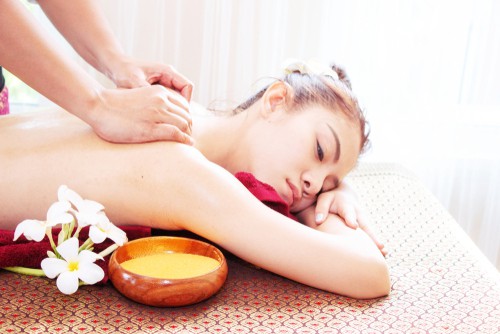
Swedish massage is highly adaptable to individual preferences. Your therapist can adjust the pressure level, focus on specific muscle groups, and address any pain or discomfort you may be experiencing. The goal is to ensure a personalized and enjoyable experience.
Post-Massage Relaxation
Transitioning Out of the Session
As your massage session draws to a close, your therapist will guide you through a gentle transition. You’ll be given time to reorient yourself and slowly prepare to leave the tranquil environment.
Providing Time to Relax and Rehydrate
Post-massage relaxation is essential. Your therapist will provide you with time to relax and rehydrate. It’s an opportunity to savor the lingering sensations of relaxation.
Post-Massage Care and Self-Care Recommendations
Your therapist may offer post-massage care recommendations, such as stretching exercises or self-massage techniques. These can help prolong the benefits of your session and promote ongoing well-being.
Frequently Asked Questions (FAQs)
What is the difference between Swedish massage and other massage types?
Swedish massage is characterized by its specific techniques, including effleurage, petrissage, friction, tapotement, and passive joint movement. Other massage types may incorporate different methods and focus on specific therapeutic goals.
Are there any contraindications or conditions that may prevent me from getting a Swedish massage?
While Swedish massage is generally safe, certain medical conditions or recent surgeries may necessitate caution or modifications. Consult with your therapist and inform them of any health concerns before your session.
How long does a typical Swedish massage session last?
A standard Swedish massage session typically lasts between 60 to 90 minutes. However, session lengths can vary depending on your preferences and the establishment’s offerings.
Is it normal to feel sore after a Swedish massage?
Mild soreness after a massage, especially if deep tissue work was involved, can be normal. It’s a sign that your muscles are responding to the therapy. Hydration and gentle stretches can help alleviate any discomfort.
Are there any age restrictions for Swedish massage?
Swedish massage is generally suitable for individuals of various age groups. However, depending on local regulations and the establishment’s policies, minors may require parental consent or supervision.
What should I do if I feel uncomfortable during the session?
Your comfort is paramount. Don’t hesitate to communicate with your therapist if you ever feel uncomfortable during the session, whether due to pressure, temperature, or any other reason. They will make adjustments to ensure your comfort.
What to Expect During a Swedish Massage Session? – Conclusion
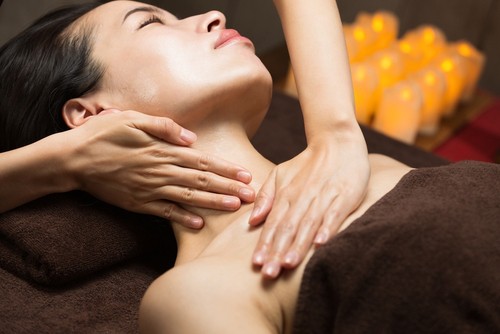
In summary, a Swedish massage session offers a holistic journey of relaxation, rejuvenation, and well-being.
With its origins rooted in soothing traditions, the core principles of Swedish massage create a symphony of sensations that ease tension and promote tranquility.
Preparing for your session, selecting the right massage oil or lotion, and understanding the process itself are essential steps in ensuring a fulfilling experience.
Swedish massage is a personalized journey tailored to your preferences and needs. The open communication between you and your therapist ensures that your session aligns with your desires.
As you transition out of the session, taking time to relax and rehydrate, you’ll carry the lingering sense of relaxation Swedish massage imparts.
Are you seeking professional and reliable massage services in Singapore? Contact us today!



